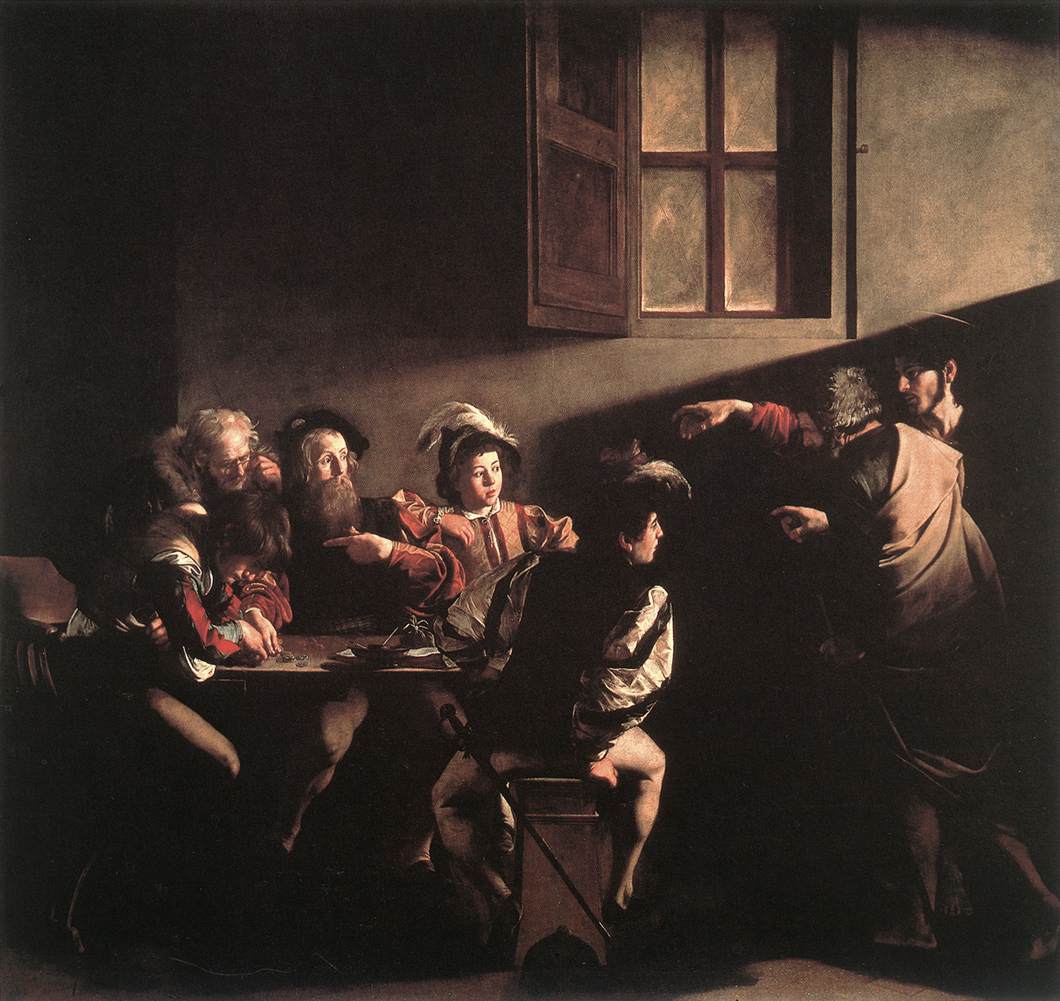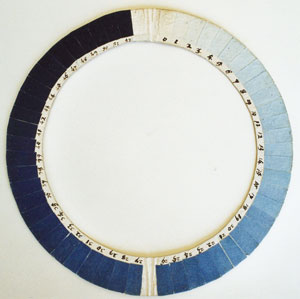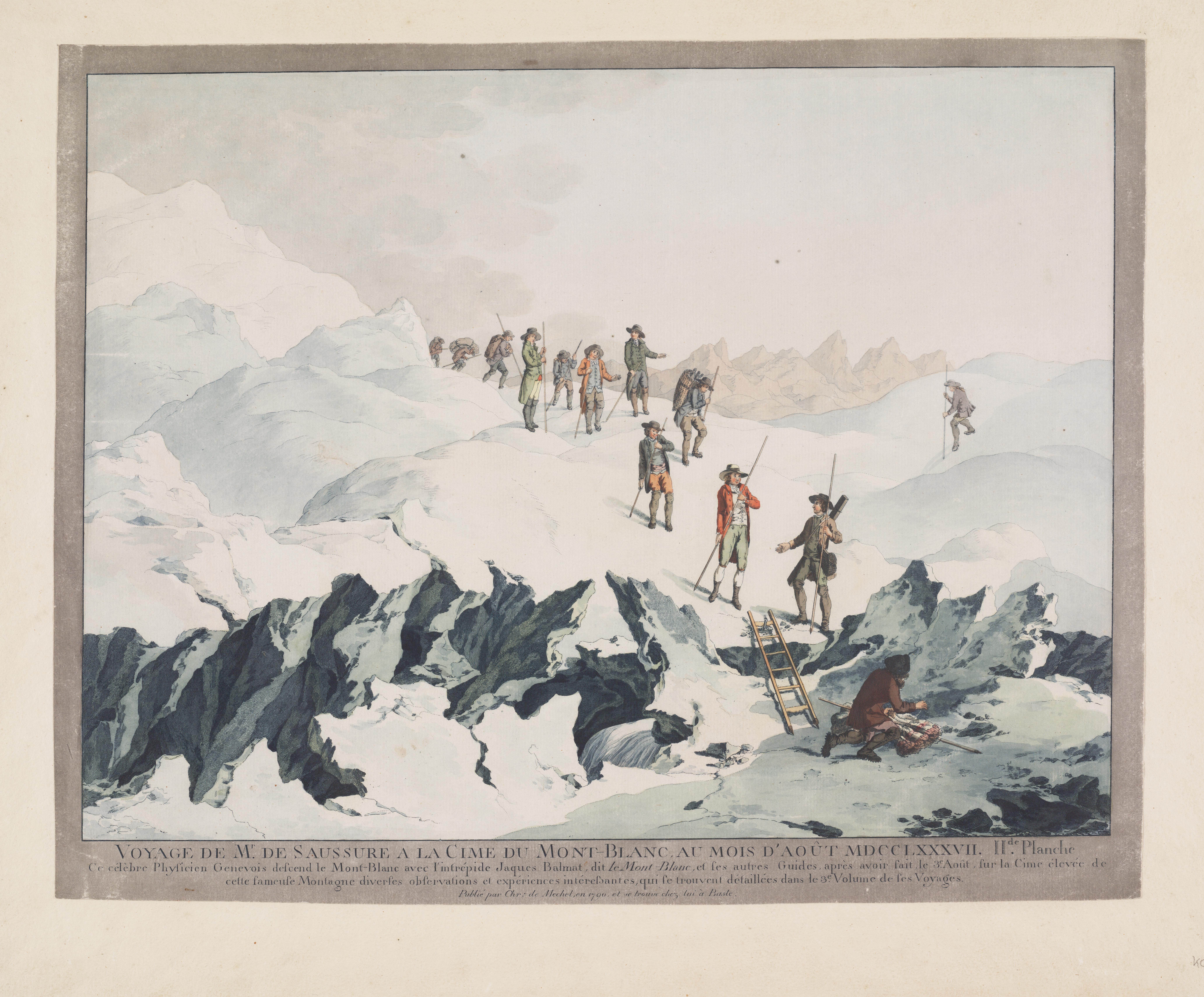 |
|
The Calling of Saint Matthew, 1599-1600, by Michelangelo Merisi da Caravaggio, no stranger to sin himself.
|
Yesterday, Sandy Quang wrote about wrestling with God and Oswald Chambers’ realization that his calling was not to art school, but to the ministry. Last night I got this note from a friend who is a Texan, a convert to Judaism, and who has sort of fallen away from her spiritual practice.
I was staying with my friend Lester, in his guest room on the lake, while another Bubba put a new steering column in my truck for me. All day on Saturday [Yom Kippur], I was feeling guilty about not fasting, not attending service, not hearing a shofar this year… yada, yada, yada.
Lester proceeded to get totally shit-faced drunk and act like an ass on Saturday night. I had no truck, because it was at Mechanic Bubba’s.
We had to go to Walmart so I could get cash to pay Mechanic Bubba the next morning. I drove Lester‘s car because he couldn’t drive anywhere without risking arrest. (I’d been drinking tonic water.)
While I was in Walmart, a big thunderstorm rolled in. When I ran out to the car, I was drenched in 30 seconds flat. When I started to drive back to Lester’s house, I realized the defroster wasn’t working, so we had to use a towel to wipe the windshield down every 30 seconds. I could only see four feet in front of me on the highway. Someone honked at me, and I was unsure if the headlights were even on, so I asked Lester to take a look.
I should have driven off and left him standing there.
When he got back in he started cussing at me that I had lights. Was I happy that he was soaking wet? When we got back onto the highway, he really started yelling. I could, literally, see nothing in front of me; the rain was coming so hard.
I said, “Lester, you’d better stop yelling at me.” He wouldn’t stop, and I was getting mad.
Mad.
I said, “Keep talking, bud, keep talking.”
So he did. “I was a g*d d%^$*#d Air Force Navigator for twenty effin’ years! You don’t HAVE to see anything because I know where I’m going.”
I saw a bright light. I swerved to the side of the road, reached in the back seat for my purse and told him “Good luck getting home without getting arrested, because this is where I get out.”
It was 10 PM. I could see what looked like a little honkytonk, with light streaming out of the doorway and music playing.
Lester leaned over and yelled, “That big black guy down there is probably going to attack you!”
I stood in the middle of the road in the darkness, looked at drunken Lester, then looked back down the hill to the source of the light and the music. The big guy in the doorway was wearing a tallit and blowing a shofar.
And there, in the driving thunderstorm, I laughed at Lester and pointed down the hill. “I’ll be safer down there with him than up here with you!”
I sat outside that little multiracial church for over an hour waiting for a ride from my mechanic. I didn’t go in, but they were very nice and lent me a cell phone to make my call. The rest of the time I just sat outside the open door, under the eaves of the old honkytonk. The sign was even still up: “The Double Ringer.”
They had taken over the building but hadn’t even taken the honkytonk sign down yet.
I had a great time, and reveled in the irony that I got to hear the shofar and preaching, and yelling, and speaking in tongues, and laying of hands, and healing, and preaching on fornication (which I was quite proud not to have had to ask forgiveness for).
.jpg) |
| Conversion on the Way to Damascus, 1600-1601, by Michelangelo Merisi da Caravaggio. In addition to being the best-painted horse’s derriere in art history, it graphically illustrates that it’s never a good idea to turn your back on the Living God. |
Hearing prayers for Israel and the Jewish people, in English and Spanish, was pretty dang cool, although I have to admit at one point, I was looking up at G-d, saying, “Why me?” But the shofar answered that, and I laughed. And I hope G-d laughs. Anyway, I’m pretty darn sure He must.
Join me in October, 2013 at Lakewatch Manor—which is selling out fast—or let me know if you’re interested in painting with me in 2014. Click here for more information on my Maine workshops!








.jpg)











